Google Adsense—>

Senior Dog Care Naturally
Natural and Healthy Care for Aging Dogs
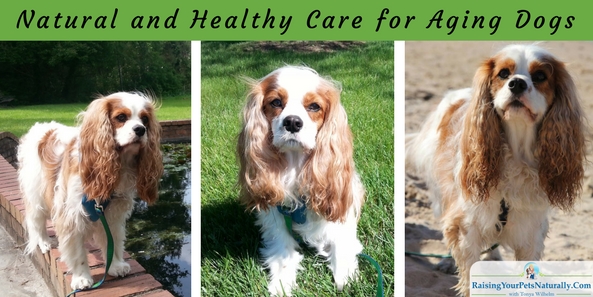
During my journey in writing this dog blog, I have examined a substantial number of subjects involving our furry friends. Now that I am writing about this particular subject, it’s truly starting to hit home for me, as my heart-dog, Dexter, will be six years young this October. I know some of you might not consider a six-year-old dog to be in his senior years, yet during the course of our normally active days, I find myself reminded of his increasing age. This brings up a good question: At what age is a dog considered a senior? The answer depends on the size and the breed, as each has its own average lifespan. Small breed dogs tend to have longer lifespans than the large or giant breeds, so if we average them all out, we are looking at somewhere between 5-10 years old being considered in the senior age range. Keep in mind that being labeled a senior does necessarily mean they are geriatric.
For me, this question recently started weighing heavily on my mind. What will our life together be like as Dexter The Dog continues to age? What will be different? Do I need to adjust my routines and activities with Dexter as he approaches his senior years? Luckily, when I have questions such as this, I can ask one of his veterinarians. I have always believed that having a good relationship with your dog’s primary veterinarian is crucial, particularly when they start to age. Preventive care will always pay off in big dividends as opposed to waiting for something to happen, which can be expensive and even risk shortening their lifespan.
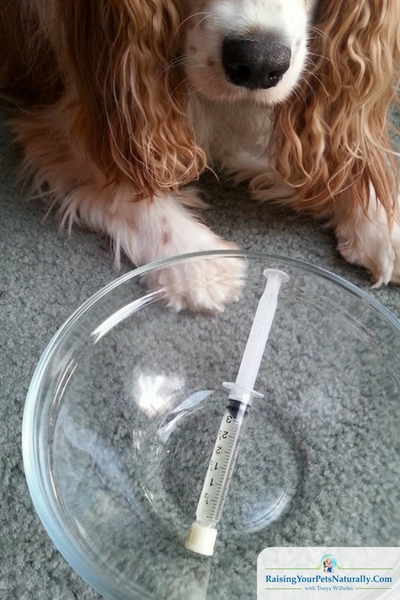
A great way to start preventive care is by scheduling semi-annual wellness exams with your veterinarian. This allows your veterinarian to exam your dog for any unusual bumps, heart concerns, hearing, eye function and many other medical issues that most dog parents cannot detect. Your veterinarian may also recommend blood work to check, and then monitor, your dog’s organ functions; having a baseline is important to detect any changes as your dog ages. For Dexter, we are already on this track (actually quarterly) because he is on daily medications for a medical condition.
Keeping physically fit is important too. If Dexter keeps an ideal body weight, he will have less pressure on his aging joints and his heart muscle. In order to manage the weight, it is imperative that they are fed a healthy diet. Personally, I customize and home cook (now DIY Raw) all of Dexter’s meals to meet both his medical and behavioral needs. When I first started doing this 2½ years ago, it had a huge impact on his health, so I cannot stress enough how important this one detail can be to your dog’s longevity!
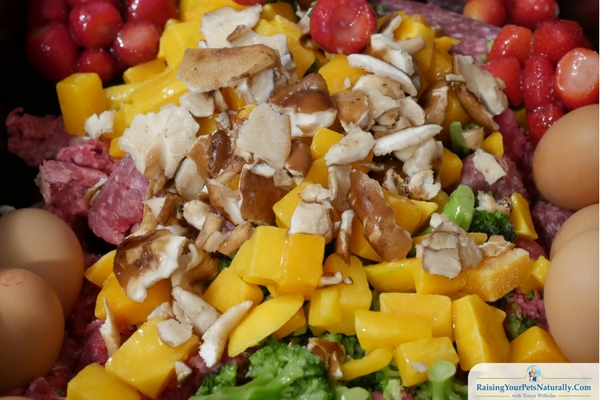
Natural supplements can improve your dog’s health too. For Dexter, we focus on heart health and joint health. Our regular regimen includes omega 3s, chondroitin, CoQ10, green lippid mussels and L-Carnitine. As always, please consult with your veterinarian on what would be appropriate for your dog and his needs.
Positive and fun dog training has always been a part of Dexter’s life; it helps to keep his mind sharp and active. If you have a socially appropriate dog, you may consider attending a positive dog training class to have a fun weekly outing with your dog. Not only will it keep your dog happy and healthy, but you may be very surprised at how quickly these classes can improve the relationship you have together. A study in 2012 showed that dogs who were provided a behaviorally enriched environment along with a diet rich in antioxidants developed better cognition skills, even levels approaching those seen in young dogs. That’s pretty amazing stuff.
For those dogs who are already in their senior years and you’ve noticed certain areas where they are slowing down, you should consult with your veterinarian before doing anything that may potentially cause injury to your dog. If you haven’t seen your vet for more than 6 months, please consider scheduling a wellness exam prior to implementing any of these techniques or games.
Check out some of our fitness and stretching videos. Don’t forget to subscribe to the channel.
Low Impact Stretching/Tricks– It’s important to keep your dog’s muscles limber and exercised. Here are a few “tricks” that can also double as stretching exercises:
- The Bow – This is a nice way to stretch out your dog’s back and stimulate his mind.
Grab a handful of healthy treats or dog food, holding some in both hands. Starting with your dog in a standing position, place both your closed fists (with food) next to your dog’s nose. As your dog starts to smell them, slowly bring your hands down, moving slightly between your dog’s front feet. As your dog bends his head down, quickly give him one treat, then quickly bring your hands back up to lure your dog back to the standing position, reward him with another treat. By luring your dog back up, you prevent him from lying down. Watch the video. - Circle/Spin – Teaching your dog how to move in a circle is another nice stretch training behavior that is easy to teach. Note, with older dogs or dogs who may not be used to learning new tricks, I like to teach this in phases.
Grab another handful of treats and place them at your dog’s nose. Next, you start to spin in a circle so your dog will follow the treat. Even though you are circling, so is your dog as he follows the treat; it’s just a bigger circle and not so tight. Once he is comfortable with this (may take a couple of days), take your treats and lure him around in a circle without you. Try to keep your lure circle nice and wide so it’s not too tight, this could cause your dog to sit down or give up. Watch the video. - Walking The Plank – This is another nice trick, or activity, for senior dogs and puppies as it helps with their coordination.
Purchase a smooth board from your local hardware store, and attach 4 short, solid legs, or even place the board on a couple of even books – not too high, just a couple of inches off the ground. Lure your dog onto the board with a treat. Don’t worry, it doesn’t have to be perfect. If he’s not shy about his surroundings, you can place one side of the board against the wall so he doesn’t jump around it. As he steps onto the board, give him a treat, lure a couple of steps, another treat, repeat. Here is a little video of a border collie practicing (for agility) to give you an idea. Obviously, your senior will be a bit slower, and more methodical.
Low Impact Walking – Probably the simplest of all of the activities. This may be done in the house or outside in your yard, it really depends on how active your dog is. Don’t try to do marathons; you want to just give him some attention and light exercise. Engage him on your walks, smell the flowers, smell the mole tunnels, maybe even encourage him to dig one up!
Low Impact Games/Play – Games and play are a must for any dog, they are such playful creatures and play brings out the best in them.
- Find the toy/treat – Start by gently playing with one of your dog’s favorite toys and get a nice game going. Ask him to Sit/Stay (or hold him back if he doesn’t know it), and place the toy 5 feet away from him & say “Find It!” Once he grabs it, start playing again, or give him a food treat. Build on this game by putting the toy farther and farther away. Tip: If your dog can “stay” while you leave the room, place the toy in another room and then tell him “Find It!” You can encourage him as he looks for the toy. If this is done outside, I recommended a leash. For a detailed explanation, read my post Find The Treat/Toy/Mommy.
- Sniffy-Sniffy – Does your dog like to smell the roses? Get outside with him and teach him to sniff on cue. Get excited, say “sniffy-sniffy” and point and touch the ground, preferably pointing to something that is likely to have some interest like a mole hole, or tree trunk. Let him lead the way, then say “sniffy-sniffy” again while pointing to something else fun and exciting. Wow! Aren’t you just the best parent for finding all those great smells! You can also toss his food out on the grass and encourage him to scavenge for it, but remember to play along, don’t just toss and walk away.
- Fetch The Leaf – This may sound odd, but I recently played a very fun game with a Cavalier friend of mine. This girl is very ball obsessed, but she is also getting up there in age, so running and leaping like a frog isn’t the best thing for her knees. The alternative to this is playing the “fetch the leaf” game. (Your outcome, of course, will vary, depending on how hard the wind is blowing.) First, while we were walking around the yard I would pick up a leaf and show it to her and tell her to “sit,” then I’d let the leaf go so she could chase it. Now, I say “chase” lightly, because it didn’t go very far and she only had to take a few steps to reach it. The leaf’s erratic movements held her attention and did not give her a reason to run around, therefore slowing her down a lot. The act of walking around looking for a leaf to toss, then the “sit position,” then tossing the leaf, all made this a very engaging game while keeping her calm at the same time. It was a major plus that she really seemed to enjoy it! It’s all about the anticipation of the game sometimes.
You should also consider other things as your dog ages. If your dog is allowed on furniture, using a dog ramp or steps is a must. Actually, they should be used at any age; a lot of damage can be done if your dog lands on his front feet or accidentally slips or falls while getting up or down. I personally have a few different sets scattered around my house that both Dexter and my cat use willingly; given the choice, I think they prefer the ramp over the steps. We have both the Puppy Stairs and Pet Gear Easy Steps. If I was not able to pick up Dexter and place him in and out of the car, I would also use a car pet ramp. I have had a lot of success with the Pet Gear brand, so check out the Pet Gear Travel Lite or Solvit UltraLite – I’ve been very happy with that brand as well.

You may also notice some changes in your dog’s behavior as he ages, and this is always a red flag for me. If your dog starts acting very out of character with increased barking, mood swings, or he just seems on edge, something is going on, and a vet visit is in order. If your dog seems lethargic, doesn’t want to eat, or engage he may be in pain. You should speak to your veterinarian. If your dog is having a tough time with aging and seems depressed, contact a qualified dog counselor to see how you can help ease his anxiety. Natural calming aids may be beneficial, along with some confidence-boosting games and activities mentioned earlier.
We are fortunate that nowadays we have some wonderful veterinarians that specialize in end of life, or hospice care for dogs. These veterinarians may provide end of life counseling, hospice service, and even in-home euthanasia. Locally, we have Four Paws Veterinary Wellness in Ann Arbor, MI. Dr. Monica Turenne is an amazing and compassionate woman.
Unfortunately, these lovely dogs can’t live forever, and as much as these furry friends give us, their life spans are way too short. It is important to think about the quality of your dog’s life as he ages. Treat the treatable, and honor your dog’s life by allowing him to go when he’s ready. Luckily in this day and age, most veterinarians will make an in-home euthanasia call. Contact your vet prior to the end so you can make arrangements when needed.
My advice to you now, GO LIVE LIFE! Enjoy your dog to the fullest now. Don’t wait until his final days, and think to yourself, “if I only had more time.” Do it now. Sign off and go play with your dog!! 10 Real Things To Do With Your Dog Before You Die
UPDATE: I can’t believe I didn’t mention the use of a dog stroller! This is another great option for when your dog cannot keep up on long hikes, vacations or other adventures. We love ours! And Toegrips. Toegrips allow dogs to easily walk on hardwood, tile or other slippery surfaces.
What are some natural preventative measures you have taken with your senior dog? Tell me in the comments.
Are you looking for even more ways to stay up to date with Raising Your Pets Naturally? Sign up for the newsletter for more tips and promotions. Don’t forget to be social and Like, Follow and Subscribe. Comments below are always welcome.
Facebook Twitter Pinterest Instagram YouTube
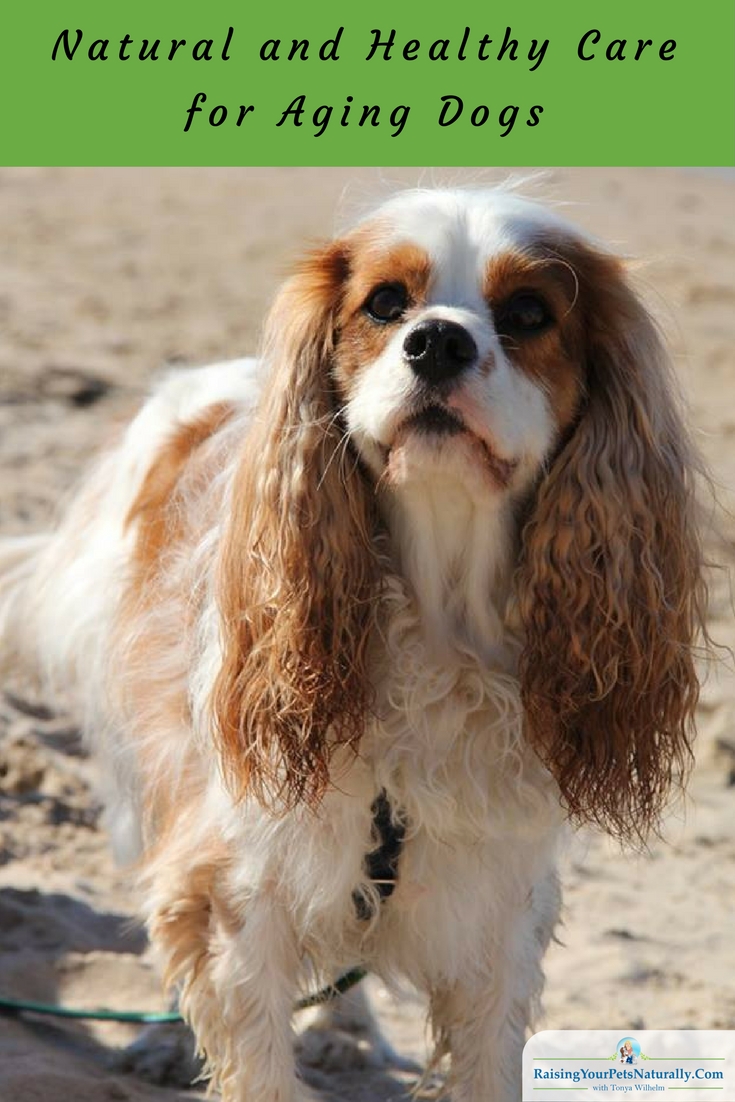





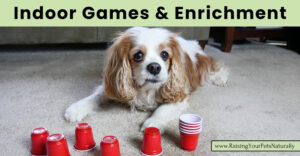
As our pets get older, we slowly realize that their health will deteriorate. Sometimes getting sickness has a correlation with their age and the percentage of getting cancer is really high. There will be times that your only choice for them is pet hospice care to make their suffering tolerable.